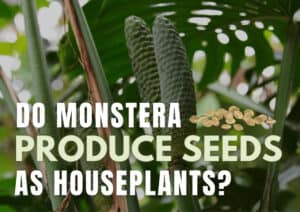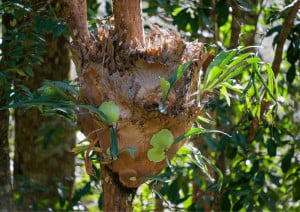What Is A Spent Node? (How And When Do They Occur?)
- Lakeisha Ethans
- February 19, 2022
If you buy something using the retail links in our articles, sometimes we earn a small affiliate commission. This does not impact the products we recommend.
There are few things quite as disheartening as trying to propagate a plant with a node cutting, only to discover days or weeks later that there’s no hope of getting any growth out of that cutting.
Plant propagators who encounter failed cuttings may be confused, especially if they’ve cut their plant in the right way and have had prior success before this instance of failure. The culprit to blame in this case may be a spent node.
A spent node is a plant cutting that has already experienced growth from all of its axillary buds, then had that growth cut off. As the axillary buds have already been used, future further growth from that plant is unlikely. This is because the growth point of that node has already been “spent” – hence the term “spent node”.
Nodes harvested from some of the most commonly grown houseplants can only produce a single axillary bud. Monstera plants, for example, only have one bud per node. This means that, for plants like this, each node is only capable of producing one chance at new growth.
This is why spent nodes, which are also called zombie leaves, can be a significant concern for fledgling propagators or those looking to purchase cuttings.
In this article, we aim to help you better understand this issue. We’ll discuss:
- How do you identify a spent node?
- How and when does a spent node occur?
- Could a spent node ever grow into a full plant?
- How can you avoid spent nodes?
This post explores the nature of spent nodes, some of the science behind them, and what to expect from a spent node. All advice here is general and if you want advice for specific plants, it’s a good idea to do your own further research into each unique species!
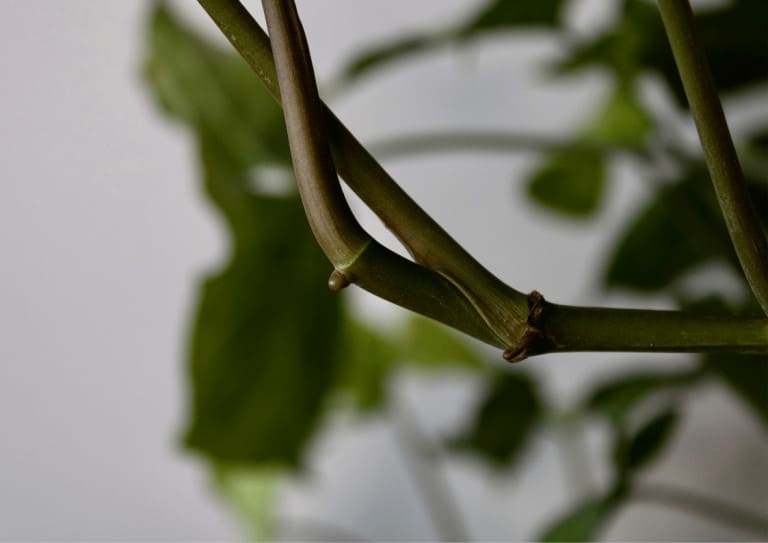
How and when does a spent node occur?
Plant growth hormones are pretty complex. They’re designed to properly manage a plant’s development so there’s no overgrowth or undergrowth.
For many plants, axillary buds are produced at even spacing throughout the plant body and stems. This allows each plant to develop the right amount of leaves as needed for growth without resulting in too-high nutritional needs.
This is why most axillary buds are meant to only be used for new growth once. This new growth is designed to sprout new leaves and stems, which will in turn have their own nodes with their own buds.
Plants don’t have a way of identifying when their axillary growth has been stopped through the cutting of that growth. They can’t tell that you’ve removed a leaf. To a plant, the spent bud signals that there’s no need for future growth there, as the growth has been performed already.
How do you identify a spent node?
To identify a spent node, you’ll first need to search up the information of the specific plant you’re trying to propagate. Figure out how many axillary buds exist per node for that plant species.
Once you’ve done that, locate the axillary bud(s) on your node cutting. Viable buds will appear fresh and green and may have even begun to sprout new leaf growth. Spent buds, on the other hand, typically have brownish ends, as if they’ve grown before and have been cut.
If all the axillary buds have already been “spent”, then you, unfortunately, have a spent node on your hands. Do note that a spent node can still be spent even if it comes with a leaf attached. Simply put, if there are no fresh, unused buds, the node is a zombie.
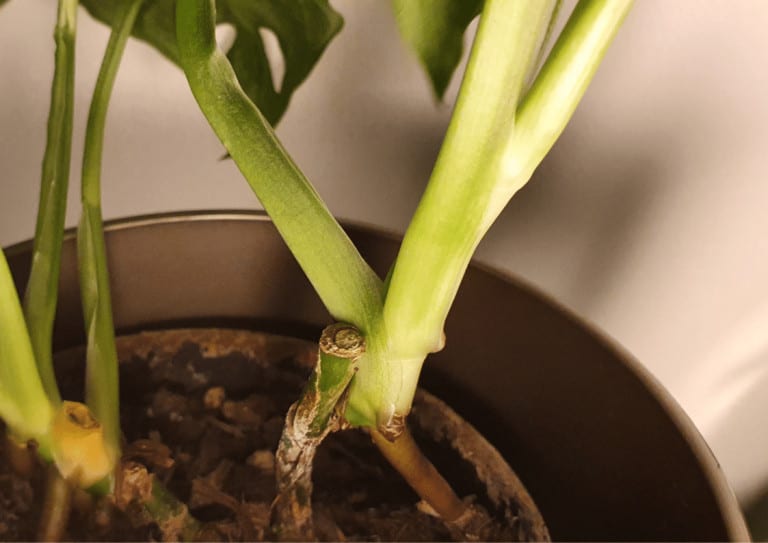
Could a spent node ever grow into a full plant?
Most people state that a spent node simply cannot ever grow anything new. Once an axillary bud has used its growth, the chances of it being able to produce more greenery are highly unlikely.
However, the exact likelihood of a spent node’s eventual success may be dependent on the plant species. Some people have found that, with enough care and patience, some of their spent node cuttings do end up finally bearing new leaves. Philodendrons, for example, might still be able to achieve growth despite being spent.
The jury is out on whether or not a spent node can ever create new growth. There haven’t been any notable or trusted studies released on spent nodes and successful propagation. A lot more research and time is necessary before we can draw any firm conclusion on this subject.
With that being said, you shouldn’t get your hopes up about the success of a spent node. The chances of a used axillary bud being able to squeeze out new growth are extremely slim. As such, it’s not wise to purchase spent nodes in hopes of developing a full plant.
There’s no harm in keeping a spent node and trying your best to see if anything will come of it, but you’ll have much better luck with a fresh node with unused buds. Mother Nature can be fickle and unpredictable, after all!
If a spent node is growing roots, does that mean it will be able to produce new growth?
The main growth hormone of plants, auxin, focuses on producing roots as those are crucial to a plant’s survival. This means that you can have spent nodes that struggle to produce leaves but successfully create lots of new roots.
Unfortunately, the verdancy of root production doesn’t mean anything when it comes to the potential for successful propagation of a spent node. Your spent node may produce many roots, but that doesn’t increase its chance of successful growth.
One single node can boast several points for roots to sprout, but they still just have one axillary bud. Due to the high survival drive of plants, it’s not uncommon for them to manage to grow new roots in unlikely circumstances. But producing new leaf growth itself is unlikely. There’s simply no relationship between these factors here.
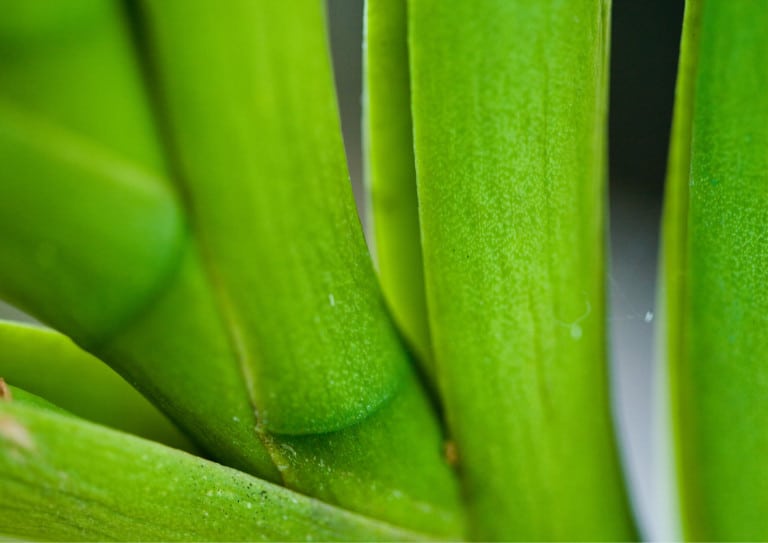
How can you avoid spent nodes?
The way to avoid spent nodes is relatively simple. Make sure that the node you plan to cut still has a fresh axillary bud that has not yet experienced any growth. You should be able to easily see which nodes are spent based on the condition of their axillary buds.
On top of that, try to allow a node cutting to grow to produce a new node first before making any risky cuts. This will ensure that, if you incorrectly cut some growth, there will still be other nodes and, therefore, other buds to continue the propagation with.
In addition, when making purchases of node cuttings in hopes of propagation, be sure to fully examine the node beforehand. Purchase from trusted sellers only, and if a seller attempts to persuade you to purchase a spent node, take your business elsewhere!
If you know the basics of plant propagation and take care to observe your plants before making cutting decisions, you should be in the clear to easily avoid spent nodes.
Take home message
Spent nodes aren’t very well understood in the plant world as of yet, but there are some things we know about them. Getting successful plant propagation out of them is almost impossible, which can be frustrating for those who have accidentally cut or purchased a spent node.
The good news is that it’s fairly easy to avoid spent nodes. Don’t cut new growth from single node stems and be smart about your cutting purchases. If all else fails, there’s no harm in leaving a spent node alone to see if it’ll manage to beat the odds and sprout, anyway.

Lakeisha Ethans
Houseplant Writer
Mother to two humans and hundreds of plant babies. Lakeisha uses her 15 years of experience as a content writer to specialise in simplifying what you need to know to grow and care for all indoor plants.
Similar Posts
Do Monstera Produce Seeds As Houseplants? Unveiling The Truth
The Monstera genus are popular houseplants due to their stunning foliage and robust nature, but are they able to produce seeds while being grown indoors?
How To Separate Staghorn Fern Pups From The Adult Plant?
Staghorn fern pups are a great way to easily propagate and grow new ferns. But how can you successfully separate them from a mature plant?

